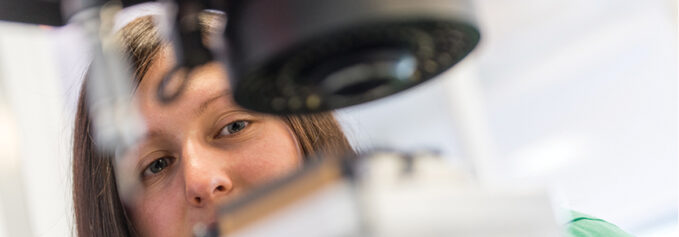
by Melissa Donovan
Corrugated board is a medium utilized in a number of applications, whether it be food packaging or a retail display. Each application has its own set of requirements, and water-based and UV/UV LED inks meet them.
Above: Koenig & Bauer Durst’s Water Technology inks are designed to save time as they allow high-quality, odor-free, and non-fading end products to be produced in a single process.
According to Andrew Brooks, water-based inks and coatings product manager, Sun Chemical, the digital printing corrugated and folding carton markets are developing swiftly. “Rising consumer demand for eco-friendly packaging often calls for paper-based packaging and digital printing. Additionally, many markets in the U.S. call for both UV- and water-based inkjet corrugated printing. Consumer lifestyles increase the demand for convenience food packaging, and industries such as healthcare, home/personal care, and food/beverage are all growing rapidly with a variety of different packaging requirements.”
Evolution of Today’s Options
Corrugated board printing benefits from UV and water-based ink sets.
“Both ink types achieve great quality, and a converter should review the best fit for their final application,” suggests Steve Lynn, executive director, Durst North America.
UV/UV LED
UV and UV LED curable inks are highly regarded for features like wide color gamut, fast dry times, low odor, flexibility, high image quality, and sharp text, states Chuck Slingerland, VP, Barberán Corrugated NA. Furthermore, “LED technology reduces the energy consumption required, which makes a strong argument that it is at least as sustainable as water-based systems.”
“Important advantages of UV digital inks include alkali-, chemical-, and scuff-resistance. They also offer greater durability and adhesion,” explains Brooks.
According to James Stanley, CPP RPbD, packaging business development manager, Mutoh America, Inc., “UV provides flexibility—both literally and figuratively. With the right formulation, UV inks can handle folds, creases, and even thermoforming without cracking, which is critical in corrugated packaging. At Mutoh, we’ve worked with different UV ink types over the years, including soft variations that are well suited for packaging. The immediate cure of UV also means jobs can move straight to finishing or shipping without waiting.”
UV ink is well known for printing on corrugated-based displays, pallet skirts, and header cards—even prototypes, lists David Harrison, senior strategic account manager, Mimaki USA, Inc.
Newer introductions to the market add to the list of applications possible with UV ink. “Historically, water-based systems were perceived as more suitable for indirect food packaging, but the development of low-migration LED curable inks is leveling that playing field while reducing energy consumption using efficient LED curing,” notes Slingerland.
Water Based
For those familiar with printing to corrugated via analog processes, Harrison says water-based inks are good replacements, primarily for lithographic lamination/labels and flexography for high graphics boxes.
A major advantage of water-based ink is that it costs less than UV, due to the maintenance cost of UV lamps and rollers, notes Brooks.
“Water-based ink is more environmentally friendly and recyclable so it suits the needs of corrugated packaging more, but has some challenges related to drying and board absorption,” admits Lynn.
Dry times have changed thanks to new technologies from vendors like Xaar. “Traditionally, ink absorption into substrates has reduced color vibrancy and increased ink usage. Standard ink sets need primers or coated board to prevent this—both of which add cost. Now, with Xaar’s Ultra High Viscosity Technology, more viscous, highly pigmented ink sets can be jetted, ensuring the pigments stay on the surface rather than soaking into the substrate, producing richer, more opaque prints with less ink,” explains Neil Cook, business development manager – ink, Xaar.
“With high viscosity aqueous inks, less fluid is absorbed by the substrate, so it also offers the advantages of less energy required for drying and the opportunity to utilize lighter weight materials,” adds Cook.
Over the years, water-based ink sets have evolved beyond just drying times that support faster production.
This includes “by increasingly meeting food safety standards and ensuring higher quality results,” explains Jochen Sproll, strategy and business development manager, Koenig & Bauer Durst.
These ink sets are food safe, formulated to meet various regulations—even for primary food packaging. The water-based nature results in a lack of odor, making them suitable for food packaging, notes Sproll.
A derivative of water-based ink is latex. “It is a newer player in corrugated. It’s been around longer in signage, but has only entered the corrugated packaging space within the last seven years. Latex does have some environmental benefits and lower odor, but it usually requires a primer to stick properly to corrugated board,” says Stanley.
White Ink
White ink can be challenging, especially when printing on corrugated board.
“Traditionally, digital inks have been formulated for low-viscosity printheads, greatly limiting the amount of pigment that can be used. This limits opacity, especially in white inks. New developments in high-viscosity inks for specific printhead types make it possible to create white ink with much greater opacity,” says Slingerland.
As Cook explains, high-viscosity technology has advantages for printing whites. “White pigment is more easily kept in suspension for longer, which means sedimentation and nozzle blocking are reduced. In addition, more pigment can be added to the fluid, which also offers a more opaque white, meaning the number of passes needed to achieve the right opacity is far less.”
White ink is common in UV printing, points out Lynn, mostly because sign and display applications require white ink often and it is readily available from many ink suppliers.
Water-based white ink is less common, but does exist. “It was developed specifically for the corrugated market and not many suppliers have fully committed to the needs of corrugated converters. Water-based white ink is available and at Durst we see it as a huge benefit for printing on kraft/brown board, especially if that application is for food safe packaging,” notes Lynn.
“With white ink there is no longer the need to use chemi or bleached white substrates that do not have such positive sustainable credentials as kraft. White ink addresses sustainability for both brands and converters by bringing kraft back into play as a lower cost alternative for many applications within the retail environment. It has a more positive impact within the recycling and waste stream due to de-inking and reclaiming the native kraft fibers,” continues Sproll.
Koenig & Bauer Durst’s own Water Technology white ink is an example, customers of the company share excitement about the product.
“The announcement of Koeing & Bauer Durst’s digital white ink is revolutionary for us and our markets, especially with it being a water-based ink. It improves the sustainability of a product, the look of a product, and the ability to react and pivot to market conditions. Sustainability is important to us as a company and our customers look to us to provide them with a sustainable product, with quality and speed to market as well,” shares Anthony Memme, digital print manager, Atlantic Packaging.
Single- and Multi-Pass Options
Single-pass printing options utilize both water-based and UV/UV LED ink sets.
For example, the Koenig & Bauer Durst Delta SPC 130 is a single-pass printer that uses its in-house developed Water Technology. The ink is designed with a water-based polymer that is cross linked and cannot migrate due to its molecular weight.
“With these new aqueous high-viscosity inks, single-pass printing is possible, as the required color vibrancy and opacity can be achieved in one pass,” says Cook.
Barberán Jetmaster Series printers are also single pass, but utilize UV ink.
“Water-based single-pass printers are geared towards high value boxes/shippers while UV-based single-pass printers print on larger displays as well as corrugated plastic,” explains Harrison.
Those multi-pass printers that are touted as printable to corrugated board are more often than not UV printers.
“They were originally designed for large format sign and display printing, to print retail graphics on plastic-based materials that require UV ink for adhesion and durability. As equipment suppliers focused on selling into the corrugated market they took existing equipment and positioned it for corrugated printing,” explains Lynn.
Stanley agrees that most multi-pass systems, especially those focused on packaging samples, point of purchase displays, or specialty work, lean heavily on UV. “That’s because UV gives you the ability to layer, build texture, and achieve fine detail.”
Water-based, multi-pass printers are not often used for corrugated. “For multi-pass, scanning printheads reduce print speed. Water-based inks applied in multi-pass printers have different absorption rates on different media and also between passes, which introduces greater complexity,” says Brooks.
Competition is Good
It is important for buyers in this space, whether they are digital printers, box plants, etc. to have multiple choices when it comes to ink sets for corrugated board printing.
“There is a place for all ink options as the needs of a retail corrugated display printer are very different compared to the needs of a converter manufacturing food safe, sustainable packaging applications. The corrugated market has varied requirements and there is no one-size-fits-all printer or ink combination. It is best to research all options and choose a supplier that can support varied needs in the market,” advises Lynn.
According to Harrison, choice is good. “Larger integrated packaging customers who want to replace high graphics flexography and lithography for boxes with digital can use water-based inks for a similar look and feel as well as for primary packaging—food grade bins for vegetables and fruit. UV offers more flexibility for displays, prototypes, medium-run samples, and creative boxes using white ink and corrugated plastic. Both have a place in the market.”
“Every customer’s workflow is different. Some need low-odor environments, others need speed, and many look for versatility. Multiple ink options offer the flexibility to choose what fits their business model,” suggests Stanley.
Variety encourages innovation, according to Slingerland. “This pushes the industry to prioritize development and improvement of their technology. This in the end benefits the industry. More choices develop the need for differentiation. This translates into enhanced printing performance and better productivity. Also, as companies prioritize different aspects such as eco-friendly inks or higher performance UV inks, the end result is more advances in capabilities for the industry and reduced costs.”
Inks for Corrugated
Water-based inks offer advantages as do UV/UV LED curable options for corrugated applications. The best solution is determined based on the job at hand. Our September webinar dives into this in more detail.
Sep2025, Industrial Print Magazine



